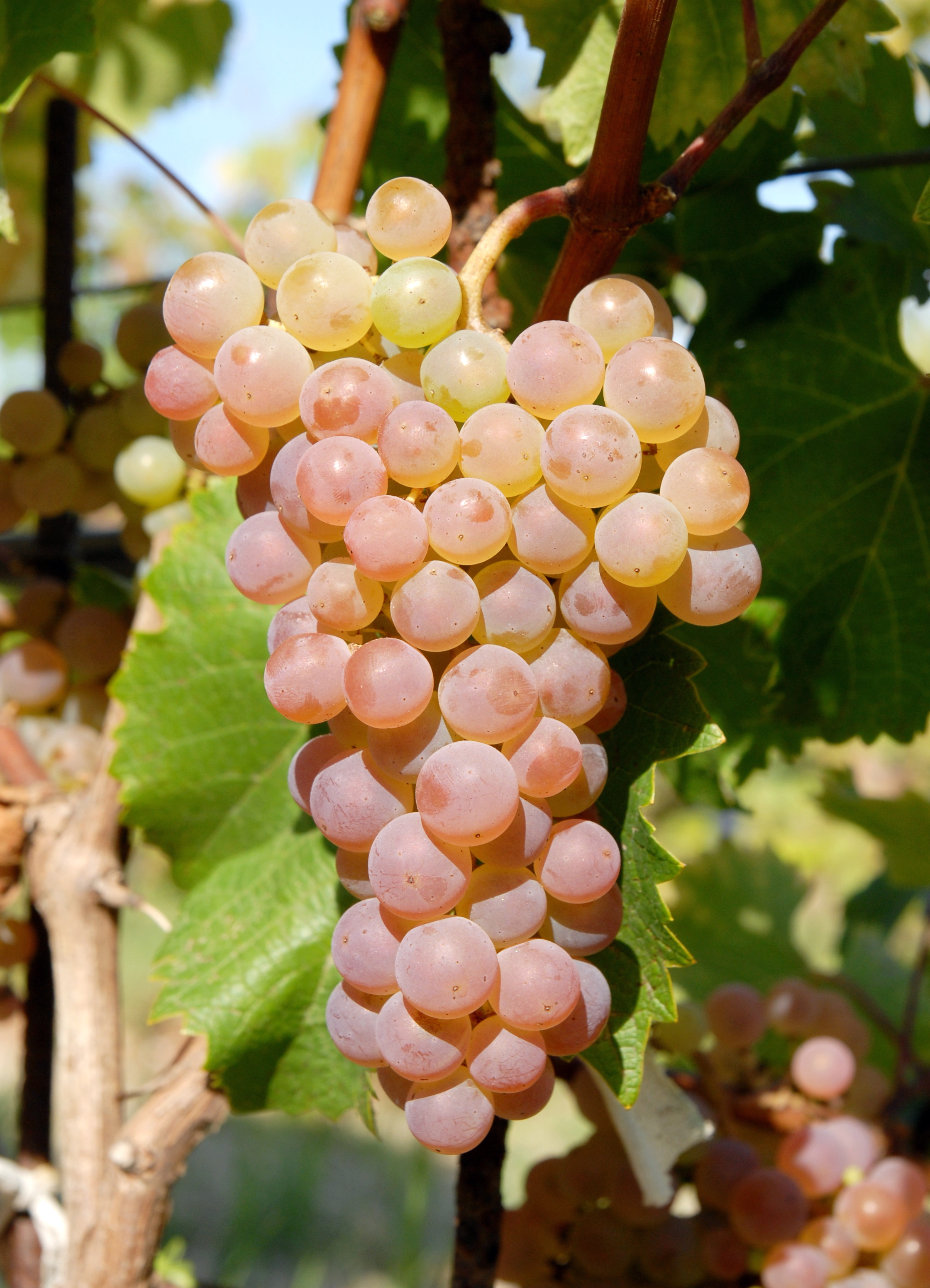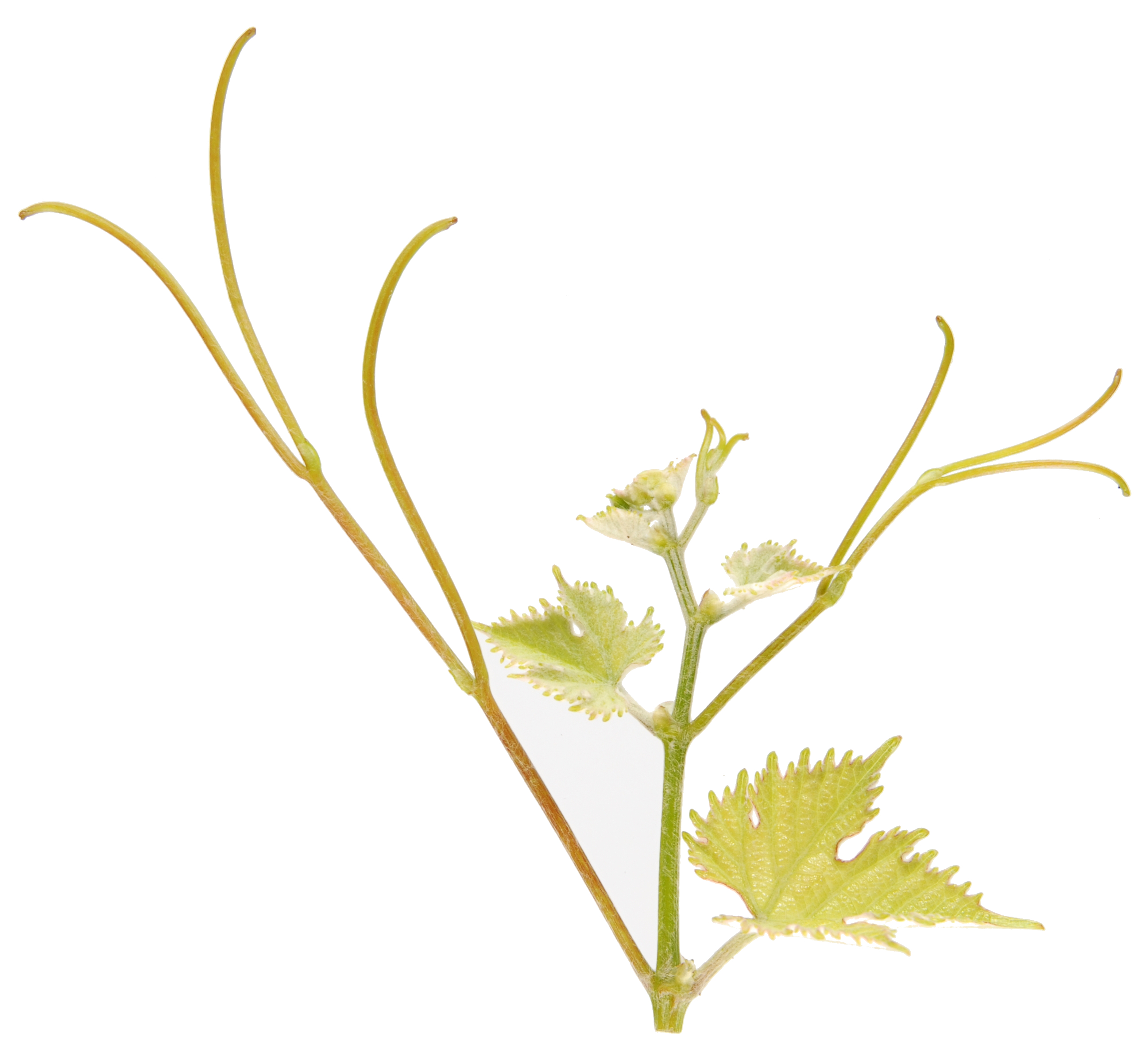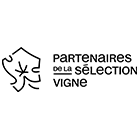Sauvignac
B Rs
Wine grape variety.
The geographical origin of the variety is specified or, if this is not possible, the area in which it is traditionally cultivated. The genetic origin of the variety is also indicated whenever it is known from hybridiser data or from genetic analyses published or obtained by the teams at INRAE in Montpellier (UMR AGAP) and Vassal-Montpellier Grapevine Biological Resources Centre (CRB-Vigne).
Sauvignac has been obtained by V. Blattner in Switzerland. This variety is an interspecific hybrid resulting from the crossbreeding of a descendant of Sauvignon x Riesling and a hybrid whose identity is unknown.
This information indicates the normal and statutory use for the grapes.
Wine grape variety.
Name under which the variety is officially registered in the catalogue of grapevine varieties in France and under which it may be propagated and disseminated.
Sauvignac
Recognised alternative names that may be used to identify the propagation material of the variety in France or in other member countries of the European Union.
There is no officially recognized synonym in France nor in the other countries of the European Union, for this variety.
This information indicates on which list the variety is registered (A or B), whether it is classified for wine grapes, and in which member countries of the European Union the variety is also officially registered (for more information, see the "Legislation" menu.
In France, Sauvignac is officially listed in the "Catalogue of vine varieties" since 2020 on the A list and classified.


Only the principal ampelographic elements enabling the varieties to be characterised and identified are provided. They are presented according to the descriptor code recognised by the International Organisation of Vine and Wine (OIV), the International Union for the Protection of New Varieties of Plants (UPOV), the Community Plant Variety Office (OCVV) and Bioversity International (for more information, see the "Ampelographic glossary" menu). The photographs of leaves and grapes were taken in natural conditions, on the vine, in very similar situations in terms of growing conditions (sandy soil, Mediterranean coast): - Domaine de l'Espiguette (IFV), Le Grau du Roi (Gard), - Domaine de Vassal (INRAE), Marseillan (Hérault), - La Gaillarde Campus (Institut Agro | Montpellier SupAgro), Montpellier (Hérault). Only a few photographs, including the tips of bunches, were taken in other conditions.
- the tip of the young shoot with a high density of prostrate hairs and a piping distribution of anthocyanin coloration,
- the yellow young leaves,
- the shoots with red nodes and internodes on the dorsal side,
- the circular adult leaves, with three or five lobes, U-shaped upper lateral sinuses that stand out on the upper side, a slightly open petiole sinus, rather large teeth, moderately long compared to their width at the base with straight sides, a weak anthocyanin coloration of veins, red petioles, an involute, slightly blistered leaf blade, and on the lower side of the leaves, a low to very low density of erect and prostrate hairs,
- the slightly obloid berries, whose skin turns yellow pinkish when ripe.
Genetic profile
The genetic profile of the variety is provided for the 9 microsatellite markers (or SSR markers) selected under the European programme GrapeGen06 (http://www.eu-vitis.de/index.php) and by the OIV. The absolute size values of the alleles may vary slightly from one laboratory to another, but the relative differences between the two alleles of one single microsatellite are constant. The genetic analyses were conducted by the INRAE Montpellier team (UMR AGAP) and the IFV’s Plant Material Centre.
| Microsatellite | VVS2 | VVMD5 | VVMD7 | VVMD27 | VRZAG62 | VRZAG79 | VVMD25 | VVMD28 | VVMD32 |
|---|---|---|---|---|---|---|---|---|---|
|
Allele 1 |
137 |
238 |
241 |
182 |
188 |
252 |
248 |
233 |
239 |
|
Allele 2 |
149 |
238 |
247 |
191 |
204 |
260 |
270 |
233 |
271 |
The data on suitability are the result of field observations or, if none are available, of bibliography mining and the study of bibliographic references.
Sauvignac has a semi-erect bearing. This variety is productive and moderately vigorous, which can lead to the depletion of the vine trunks if the yields are not managed. Thus, Sauvignac is not very adapted to mechanical pruning. Its foliage is sensitive to the wind and its shoots break easily. This variety is susceptible to magnesium and potassium deficiency.
These remarks are also the result of field observations or, if none are available, of bibliography mining and study of bibliographic references.
Sauvignac is not very sensitive to downy mildew and black rot. This variety is also not very sensitive to grey rot. It is not very susceptible to powdery mildew on the leaves and a little bit more on the bunches. Its foliage is also sensitive to sulfur.
The growth stages indicated are the result of obsrvations made at the Domaine de Vassal Estate where the set of these varieties form a collection. The results are indicated compared to the Chasselas vine variety as a reference in order to make comparisons between years and different sites. As such, for information purposes, the dates for the Chasselas B growth stage at Domaine de Vassal are as follows: - Bud burst, 21 March (average over 50 years) - Grape maturity, 14 August (average over 50 years)
Bud burst: 8 days after Chasselas.
Grape maturity: early-season, 1 week after Chasselas.
The size of grape clusters and berries indicated are based on the following scales: - Wine grape varieties Size : Very small Bunch (g) : ≤ 100 Berry (g) : 1 - Table grape varieties Bunch (g) : 150 Berry (g) : 2 - Wine grape varieties Size : Small Bunch (g) : 100 - 200 Berry (g) : 1,5 - 2 - Table grape varieties Bunch (g) : 150 - 250 Berry (g) : 2 - 3,5 - Wine grape varieties Size : Moderate Bunch (g) : 200 - 250 Berry (g) : 2 - 2,5 - Table grape varieties Bunch (g) : 250 - 400 Berry (g) : 3,5 - 5,5 - Wine grape varieties Size : Large Bunch (g) : 250 - 400 Berry (g) : 2,5 - 3,5 - Table grape varieties Bunch (g) : 400 - 700 Berry (g) : 5,5 - 8 - Wine grape varieties Size : Very large Bunch (g) : 400 Berry (g) : 3,5 - Table grape varieties Bunch (g) : 700 Berry (g) : 8 Remarks concerning the characteristics of the wines are generally based on tastings organised by juries of professionals.
Sauvignac's bunches are small and moderately compact. The berries are medium in size, with a moderately thick skin. This variety produces light, pleasant wines, with citrus fruits and exotic fruits aromas. However, they can sometimes lack acidity.
In this section, the list of certified clones is given. Information on clone conservatories is also provided.
There is no certified clone for this variety yet.
Bibliography
- Documentary collections of the Centre de Ressources Biologiques de la Vigne de Vassal-Montpellier, INRAE - Institut Agro | Montpellier, Marseillan, France.
- Les cépages résistants aux maladies cryptogamiques. Collectif, 2012, Ed. Groupe ICV, France.
- Variety sheet Sauvignac. Nathy, 2020. > Link.





